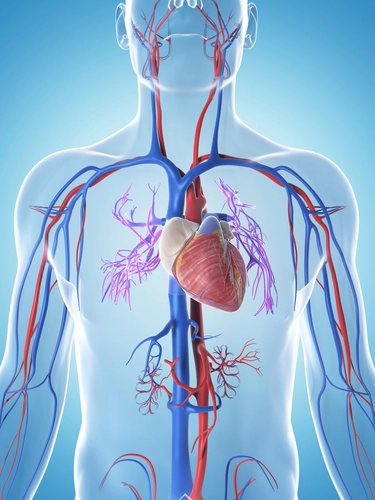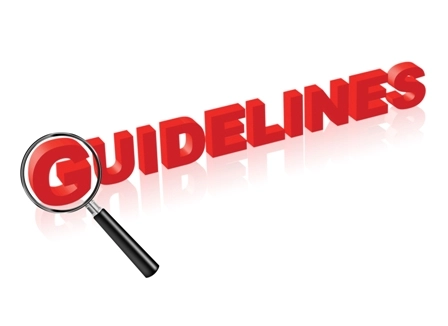Cardiology Coding Alert
Here’s How to Effectively Use New Coarctation of Aorta Repair CPT® 2022 Guidelines
Hint: Report 33894 and 33895 when your cardiologist uses stent placement to treat coarctation.
In the article, “LAA Exclusion, Coarctation of Aorta Repair, Congenital Defect Cath Codes Highlight New Year’s CPT® Changes,” featured in Cardiology Coding Alert vol. 24, no. 10, you learned all about the new codes you can report for transcatheter interventions for revascularization or repair of the coarctation of the aorta. Along with these new codes, CPT® has also added numerous guidelines and rules you must follow to keep your claims in tip-top shape.
Review these guidelines now to submit clean coarctation of aorta repair claims in 2022.

Rely on 3 New Codes for Coarctation of Aorta Repair
In 2022, you will receive the following new codes for transcatheter interventions for revascularization or repair of the coarctation of the aorta:
- 33894 (Endovascular stent repair of coarctation of the ascending, transverse, or descending thoracic or abdominal aorta, involving stent placement; across major side branches)
- 33895 (… not crossing major side branches)
- 33897 (Percutaneous transluminal angioplasty of native or recurrent coarctation of the aorta)
“Codes 33894, 33895, 33897 describe transcatheter interventions for revascularization or repair for coarctation of the aorta,” per the CPT® guidelines.
Coarctation of aorta defined: The coarctation of the aorta is a birth defect where part of the patient’s aorta is narrower than normal, according to the Centers for Disease Control and Prevention (CDC).
Codes 33894 and 33895: You should report codes 33894 and 33895 when your cardiologist uses stent placement to treat the patient’s coarctation, according to the CPT® guidelines. When it comes to the main difference between these two codes, your cardiologist will place the stent across one or more major side branches of the aorta in a 33894 procedure, but not with a 33895 procedure.
“For reporting purposes, the major side branches of the thoracic aorta are the brachiocephalic, carotid, and subclavian arteries, and the major side branches of the abdominal aorta are the celiac, superior mesenteric, inferior mesenteric, and renal arteries,” per the CPT® guidelines.
“Coarctation of the aorta will cause the left ventricle to pump against a much higher resistance and can eventually lead to heart failure and shock,” says Robin Peterson, CPC, CPMA, Manager of Professional Coding, Pinnacle Integrated Coding Solutions, LLC. “At one, time surgical repair was the only option for treatment of coarctation of the aorta.”
As technology keeps advancing, so do the treatment methods, Peterson added. Stent placement to the aortic arch is met with some challenges, particularly if the stent needs to extend past the branch vessels that feed the head and arms.
“Branched stent grafts are an option that include a main body and have internally contained side branches or a main body with open portals for branch extensions,” Peterson said. “However, stent grafts don’t grow with the patient’s anatomy so, often, percutaneous endovascular repair is performed on older children, whereas surgery still seems the be the gold standard for newborns and infants currently.”
Code 33897: You should report code 33897 when your cardiologist dilates the coarctation via balloon angioplasty without stent placement.
Don’t Separately Report Some Services
Codes 33894-33897 include many services so you cannot report these separately, per the CPT® guidelines. Some of these included services are:
- Fluoroscopic guidance of the intervention
- Diagnostic congenital left heart catheterization
- All catheter and wire introductions and manipulation
- Angiography of the target lesion
Additionally, codes 33894 and 33895 also include stent introduction, manipulation, positioning, and deployment, temporary pacemaker insertion for rapid pacing (33210) to facilitate stent positioning, when your cardiologist performs this procedure, as well as any additional stent delivery in tandem with the initial stent for extension purposes.
Don’t miss: You cannot separately report balloon angioplasty that a cardiologist performs within the target-treatment zone, either before or after stent deployment. However, if your cardiologist performs “balloon angioplasty of an additional coarctation of the aorta in a segment separate from the treatment zone for the coarctation stent,” you should report code 33897.

Follow These 6 Rules When Reporting Coarctation of Aorta Repair
CPT® offers numerous rules you should follow when reporting coarctation of aorta repair. They are as follows:
Rule 1: You may separately report other interventional procedures that your cardiologist performs at the time of the 33894 and 33895 service when they perform the procedures before or after the coarctation stent deployment. These procedures include innominate, carotid, subclavian, visceral, iliac, or pulmonary artery balloon angioplasty or stenting and arterial or venous embolization.
Rule 2: Never report codes 33894 and 33895 in conjunction with cardiac electrode or pacemaker catheter insertion or replacement code 33210, endovascular repair of the abdominal aorta or iliac artery codes 34701-34706, catheter introduction code 36200, aortography codes 75600, 75605, and 75625, injection code +93567, and cardiac catheterization for congenital heart defects codes 93595-93597.
Rule 3: Never report codes 33894 and 33895 in conjunction with code 33897, endovascular revascularization code 37236 and transluminal balloon angioplasty code 37246 when your cardiologist performs balloon angioplasty of the aorta within the coarctation stent treatment zone.
Rule 4: Never report code 33897 in conjunction with codes 33210, 34701-34706, 36200, 37236, 37246, 75600, 75625, +93567, or 93595-93597.
Rule 5: If your cardiologist performs balloon angioplasty of the aorta for lesions other than coarctation, such as atherosclerosis, of the aorta in a segment separate from the coarctation treatment zone, you should report code 37246.
Rule 6: If you need to report additional diagnostic right heart catheterization performed in the same setting as codes 33894 and 33895, you should turn to codes 93593 (Right heart catheterization for congenital heart defect(s) including imaging guidance by the proceduralist to advance the catheter to the target zone; normal native connections) and 93594 (… abnormal native connections).
Related Articles
Cardiology Coding Alert
- CPT® 2022 Guidelines:
Here’s How to Effectively Use New Coarctation of Aorta Repair CPT® 2022 Guidelines
Hint: Report 33894 and 33895 when your cardiologist uses stent placement to treat coarctation. In [...] - Quiz:
Test Your Septic Embolism Knowledge With a Quick Quiz
Remember: Never report septic embolism as the primary diagnosis. Reporting septic embolisms can be tricky [...] - CDI:
4 Tips Build Powerful CDI Program in Your Cardiology Practice
Hint: Have written policies and procedures. During the 2021 RISKCON session, “Establishing an Effective CDI [...] - You Be the Coder:
Solve This Tilt Table Coding Conundrum
Question: My cardiologist performed a tilt table test. During the tilt table test, my cardiologist monitored [...] - Reader Questions:
Understand Meaning of MUE
Question: I don’t understand what the acronym MUE means in relation to the Centers for Medicare [...] - Reader Questions:
Rely on CMS-838 for Improper Payment
Question: How can we be sure we’re refunding the correct amount when a claims processing [...] - Reader Questions:
Report 92960 for Cardioversion
Question: My provider prepped, anesthetized, and laid the patient in the supine position with their chest [...] - Reader Questions:
Report AAA Scenario With Ease
Question: My provider applied conductive on the skin over the patient’s abdomen. They pressed the [...]




